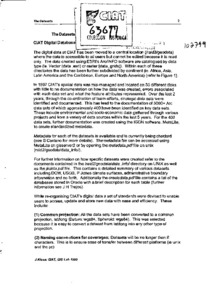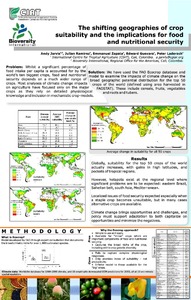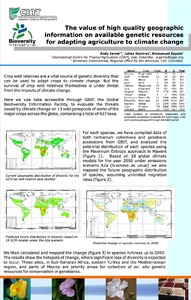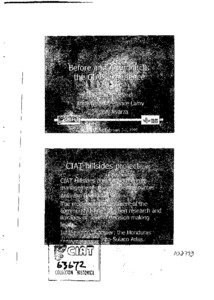sistema de informação geográfica
AGROVOC URI:
Target area identification using a GIS approach for the introduction of legume cover crops for soil productivity improvement : A case study eastern Uganda
Amidst the economic backdrop of resource-poor farmers, combined research and extension efforts in developing countries have focused on developing and promoting potentially adaptable and economically acceptable agronomic technologies that suit farmers situations. Practices like improved fallows with woody and herbaceous legumes (e.g. Canavalia sp., Crotalaria sp.,Mucuna sp., Lablab sp., and Tephrosia sp.) are considered an appropriate approach to improving soil fertility management and an alternative to expensive, and often not available, inorganic fertilizers.
Technical implications of land monitoring projects using remote sensing data in Central America for natural resource management
Tenth progress report on managing irrigation systems to minimize waterlogging and salinity problems
The changing face of irrigation in Kenya: opportunities for anticipating changes in Eastern and Southern Africa
The collaboration between IIMI and CEMAGREF in Pakistan: proceedings of a one-day workshop, International Irrigation Management Institute, Lahore, Pakistan, 3 October 1997
The GeoCitizen-approach: community-based spatial planning – an Ecuadorian case study
Over the last years, geospatial web platforms, social media, and volunteered geographic information (VGI) have opened a window of opportunity for traditional Public Participatory GIS (PPGIS) to usher in a new era. Taking advantage of these technological achievements, this paper presents a new approach for a citizen-orientated framework of spatial planning that aims at integrating participatory community work into existing decision-making structures.
The use of herders' accounts to map livestock activities across agropastoral landscapes in Semi-Arid Africa
Improved understandings of the agricultural and range ecologies of semi-arid Africa require better information on the spatiotemporal distribution of domestic livestock across agropastoral landscapes. An empirical GIS-based approach was developed for estimating distributions of herded livestock across three agropastoral territories (around 100 km2 each) over a two-year period.






